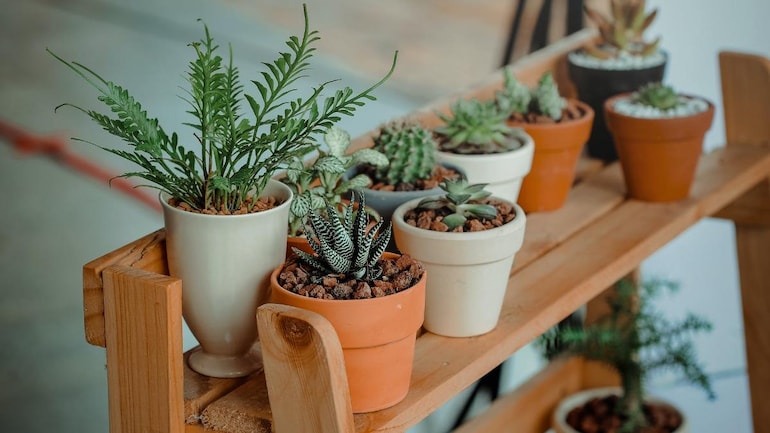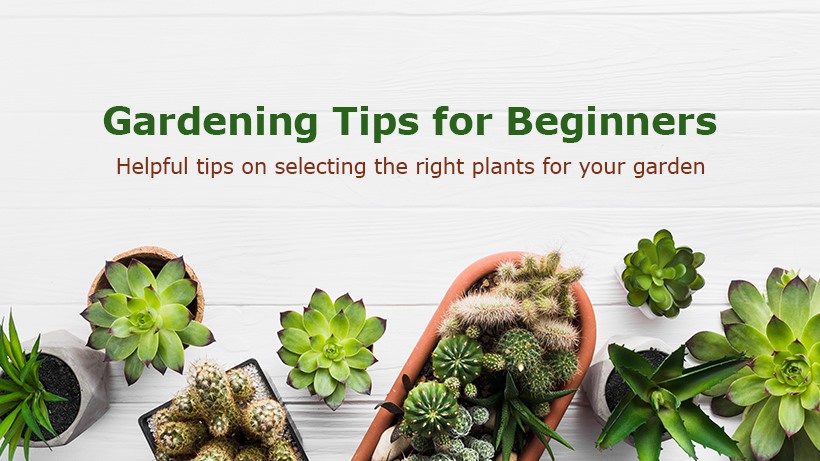Blog
How to take care of indoor plants?
Different plants require different temperatures, hydration, and humidity conditions to thrive. See how you can take care of your indoor plants.

Different plants require different conditions to grow and thrive. See how to take care of your indoor plants
Indoor plants often add to the ambience of a house or any place they are kept at. Not only do they make a place look more beautiful but some also purify the inside environment. Plants also improve your health and help increase your focus.
Here are the ways you can follow to ensure the good growth of your plants.
Water your plants regularly
 Water plants regularly.
Water plants regularly.
- Keep the soil moist
- Whether the soil is too dry or overwatered, it can be an obstruction in the growth of the plant.
- In some cases, less or overwatering the plant also destroys it. Plants which have lush, thick leaves need more water than plants with waxy or leathery leaves.
- If you see mould formations on the surface of the soil or the water is standing at the bottom of the container that means the plant has been overwatered.
- Give water when the soil of the plant turns lighter in colour or seems cracked.
- Standing water can kill plants. If you see standing water in or under the pot, then pour it out.
Put your finger in the plant pot to check below the surface
 Check the soil moisture.
Check the soil moisture.
If the soil feels moist, then it is ok. If it feels dry, you need to give some water to the plant. Water requirement varies from plant to plant.
- Discoloured leaves, lack of leaf growth, loss of leaves, and soft rotten patches means overhydration.
- Slow leaf growth, brown and dried leaf edges, and lower leaves becoming yellow and curled mean the plant is dehydrated.
Do not use very cold or hot water
 Pour water at room temperature.
Pour water at room temperature.
- 68° F or 20° C is the best temperature for the water that you are using to water your plants. Water at room temperature is best suitable for plants.
- Water that is too hot can cause root damage and further kill your indoor plant.
- Water that is too cold can cause dormancy in your plant, which hampers the growth of the plant.
Taking care of your indoor plant
Choose an area in your house that receives proper sunlight Give some sunlight or artificial light to plants.
Give some sunlight or artificial light to plants.
- Plants need sunlight to prepare food by the process of photosynthesis. The quality, time, and intensity of sunlight affect a plant’s growth.
- Do not put the plant under direct sunlight. Keep them in a well-lit room which gives them enough light.
- Fluorescent lights can also work in place of sunlight for some plants.
- Flowering plants need 12-16 hours of light per day.
- Foliage plants need 14-16 hours of light per day.
Avoid moving your plants around
- Plants also adapt themselves to their surroundings with time, therefore it is advised to not move them around a lot.
- Do not move your plant to an entirely different temperature zone (darker to the lighter area).
- In case you wish to move the plant, slowly try to adapt it to a new place by taking it there for an hour a day in the beginning. Keep on increasing the time till it adapts fully.
Increase the humidity in the room
- Dry air can harm some plants as most plants require humidity, especially tropic plants. You can get a room humidifier from the nearby store with a cool mist, and place it close enough to provide moisture in the air to the plant. Make sure it does not create any foliage or flowers wet.
- You can also go for a cheaper alternative to the humidifier. Filled a tray with pebbles. Put water just up and below the tops of the pebbles. The evaporating water will cause humidity in the room.
- You can also use a spray bottle with distilled water, and drizzle it over the plants to provide the extra moisture.
- Wilting browned leaves, and flower buds are indications of signs that your plant is suffering from low humidity.
- You can also keep your plants close to each other to increase humidity.
Fill your pot with fertilizer Add fertilizers to the pot to provide nutrients to the plant.
Add fertilizers to the pot to provide nutrients to the plant.
Most of the houseplants survive in balanced 10-10-10 fertilizer. House plants derive all the nutrients from potting soils and fertilizers to survive. Therefore you need to report the plant and add new nutrients to the soil, otherwise, the plant will die over the course of time.
- The first is nitrogen, the second is phosphorus, and the third is potassium. You can remember it as N-P-K.
- A flowering plant requires a fertilizer that is high in Potassium.
- Whereas a foliage plant requires a fertilizer or potting soil rich in Nitrogen.
- Cacti or succulents can survive in a harsh, desert-like environment. They require a special potting mix specially designed to drain water efficiently. You can also have a pot with plenty of holes on the bottom. These prevent plants from holding too much moisture in the soil, which can cause their death.
Prune your plant regularly
- Certain plants require their roots to be pruned at regular intervals, therefore it becomes essential to know about your plant and its requirements.
- A plant which is not pruned can outgrow the pot or vase. By pruning your plant regularly, you will keep it healthy, and prevent replanting.
- Shave off dead branches or stems as they tend to attract bugs.
Do not put tea or coffee into your houseplant
- Putting coffee or tea into your house plant will attract flies that can eat t your indoor plant. Sugars also serve as a breeding ground for such insects.
(Input: Wikihow)


 If you need any assistance, I'm always here. Have you found what you were looking for?
If you need any assistance, I'm always here. Have you found what you were looking for?